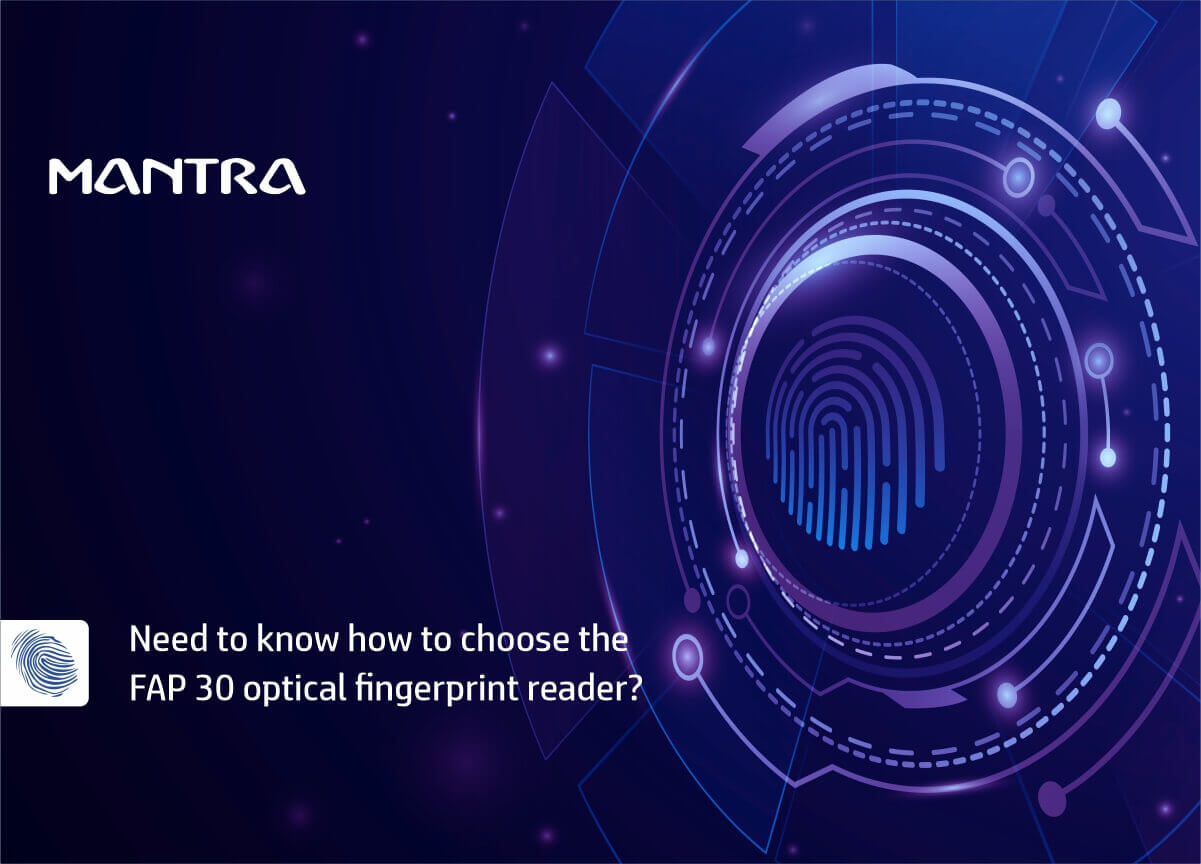
FAP 30 is a promising single fingerprint scanner regarding its certification and capture size. The Fingerprint Acquisition Profile (FAP) is the FBI's Personal Identity Verification (PIV) specification that most governments prefer for their applications. FAP specification gives directions on the capture area, security, and image quality produced by the scanner.
Personal identification one-to-one fingerprint devices (i.e., FAP10, FAP20, FAP30) are the most popular biometric authentication devices on the market. According to Allied market research, it will reach $9.41 billion by 2027 from $2.93 billion in 2019, marking a CAGR of 14.5% during the period. The most significant product among them is FAP 30. Let us help you in choosing FAP 30 devices.
More fingerprint market analysis: Fingerprint Sensors Market Analysis: Sectors Driving Up Their Demand
What are FAP 30 fingerprint devices?
Fingerprint devices are classified as FAP10 to FAP60 by the FBI's Electronic Biometric Transmission Specification (EBTS), with FAP10, FAP20, and FAP30 being single flat fingerprint scanners. These devices are used for one-to-one fingerprint matching enrollment and verification (PIV-071006). In this category, FAP 30 is at the top of the list.
| Category | FBI EBTS spec | Image capture area (WxH inches) |
|---|---|---|
| FAP 10 | PIV-071006 | 0.5 x 0.65 |
| FAP 20 | PIV-071006 | 0.6 x 0.8 |
| FAP 30 | PIV-071006 | 0.8 x 1.0 |
FAP 30 has more capture area, which means it can scan a larger fingerprint area. The capture size of the scanner determines the matching performance. This suggests that FAP30 has higher accuracy and picture quality. The FBI usually recommends the FAP30 devices for the Automatic Fingerprint Identification System for the same reason (AFIS).
FAP 30 devices have law enforcement, banking, healthcare, consumer electronics, healthcare, network security, and defense applications.
Also read: How to Choose the Best Fingerprint Scanner?
How to choose a FAP 30 fingerprint scanner?
Sensor type:
Fingerprint sensors generally come in two types, optical and capacitive types. An optical fingerprint reader illuminates the fingerprint surface, allowing the ridges and valleys to be seen clearly. This visible print is captured for identification purposes. Optical fingerprint scanners are most commonly used because it is cheap to manufacture and use (low maintenance cost). On the other hand, capacitive sensors read the difference in capacitance between the fingerprint ridges and valleys.
Maintenance-free:
The FAP30 devices may have high use in the daily routine of an organization (indoor and outdoor). The sensor has to be hard-cased and withstand continuous use for a long time. The optical fingerprint sensors must be scratch-proof and work in direct sunlight.
Durability:
Whether the part is optical or capacitive, it must be wired and tightly bonded to the device face so that even a hard press does not damage the sensor face. The sensor must provide consistent performance both indoor and outdoor.
Security:
FAP30 is not just about the capture size; it must ensure the security criteria according to the PIV-071006 specifications. The device shouldn't store or share biometric data.
Cost-effective:
The scanner must be reasonably priced without sacrificing quality or usefulness. In a nutshell, the product must provide good value for money.
Free SDK:
The scanner is merely the hardware; to run on multiple platforms requires SDK. Not all manufacturers offer free SDK; make sure it's available before purchasing the scanner.
Take away
FAP30 devices are simple flat fingerprint scanners that may appear identical to other FAP PIV devices, but even little changes in the capture area matter. FAP30 can be your perfect replacement for passwordless authentication regarding accuracy and security. It is available as standalone as well as integrated devices. For more device details, visit: Mantra fingerprint sensors
omveer singh
Good article
Reply